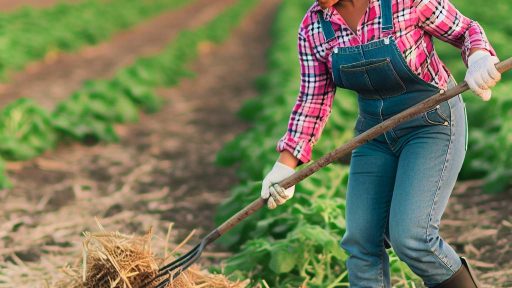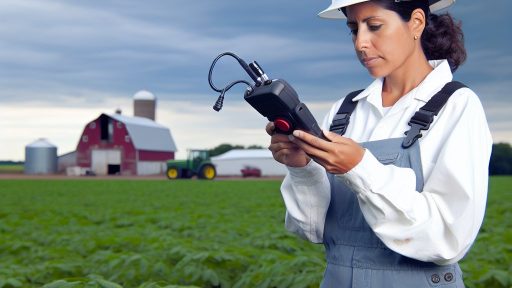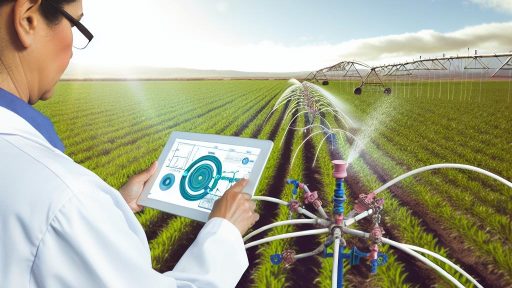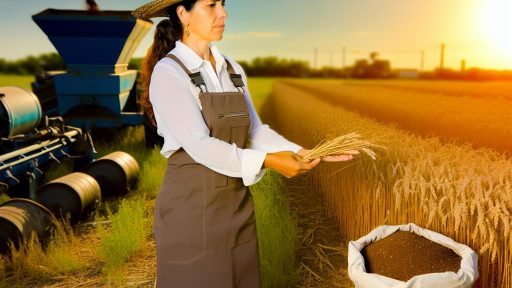Introduction to Innovative Packaging and its Importance in Shelf Life
Innovative packaging plays a crucial role in modern food preservation.
It protects products from spoilage and extends their freshness.
Effective packaging can reduce waste in the supply chain.
Additionally, it enhances consumer convenience and satisfaction.
The choice of materials significantly impacts shelf life.
For example, biodegradable films can slow down oxidation processes.
Moreover, vacuum sealing prevents moisture and air exposure.
Innovative packaging designs also improve user interaction.
Smart packaging integrates technology for monitoring freshness.
As a result, consumers receive real-time information on product quality.
Consequently, they can make informed decisions about their purchases.
In the competitive market, standing out is vital for brands.
Unique packaging can attract consumers and enhance brand loyalty.
Thus, exploring innovative packaging solutions is essential.
This exploration leads to sustainable practices and better shelf management.
Transform Your Agribusiness
Unlock your farm's potential with expert advice tailored to your needs. Get actionable steps that drive real results.
Get StartedInnovative packaging not only protects but also promotes products effectively.
Focusing on both functionality and aesthetics can drive sales.
Ultimately, the right packaging solution builds trust with consumers.
Innovative packaging is more than just a protective layer.
It significantly contributes to the overall marketability and sustainability of products.
Biodegradable Materials: How They Enhance Freshness and Reduce Waste
Understanding Biodegradable Packaging
Biodegradable packaging decomposes naturally over time.
This process reduces long-term waste in landfills.
Using organic materials, it supports environmental sustainability.
Common biodegradable options include corn starch and plant fibers.
Enhancing Freshness with Innovative Designs
Biodegradable materials help maintain product freshness.
They often feature breathable designs that allow airflow.
Such designs prevent excess moisture that can lead to spoilage.
This capability extends the shelf life of perishable goods.
Reducing Environmental Impact
Traditional packaging contributes significantly to plastic pollution.
Biodegradable options break down more quickly than plastic.
This transition minimizes ecological harm and waste accumulation.
Furthermore, these materials often require fewer resources to produce.
Case Studies of Successful Implementation
Many companies are embracing biodegradable packaging solutions.
For instance, EcoPack Industries has innovated with plant-based films.
These films are both compostable and efficient in preserving food.
Another example is GreenWrap, which utilizes mushroom mycelium as packaging.
Challenges and Considerations
Despite their benefits, biodegradable materials face challenges.
Consumer awareness remains low in some markets.
Additionally, production costs can be higher than traditional packaging.
Showcase Your Farming Business
Publish your professional farming services profile on our blog for a one-time fee of $200 and reach a dedicated audience of farmers and agribusiness owners.
Publish Your ProfileEducating consumers about benefits is essential for acceptance.
Future of Biodegradable Packaging
The future looks promising for biodegradable materials.
As technology advances, production methods will improve.
Subsequently, costs should decrease, making them more accessible.
Ultimately, widespread adoption could significantly reduce waste.
Active Packaging Techniques
Overview of Active Packaging
Active packaging significantly enhances food preservation.
This technology interacts with food to prolong shelf life.
Furthermore, it helps maintain quality and safety.
Types of Active Packaging
Several active packaging techniques exist today.
Modified Atmosphere Packaging (MAP) is one popular method.
This method adjusts the gas composition in packaging.
It effectively slows down spoilage processes.
Oxygen scavengers are another effective technique.
They absorb oxygen to prevent oxidative damage.
Thus, they help in extending food shelf life.
Benefits of Active Packaging
Active packaging provides numerous advantages.
First, it can improve food safety significantly.
Second, it enhances the overall sensory qualities.
This includes taste, texture, and aroma.
Moreover, it reduces food waste substantially.
This is especially important in today’s food industry.
Challenges in Implementation
Despite the benefits, challenges exist in active packaging.
First, the cost of materials can be high.
Second, regulatory hurdles may complicate usage.
Finally, consumer acceptance may vary widely.
Future Trends in Active Packaging
Future innovations will likely focus on sustainability.
Biodegradable materials are gaining attention now.
Moreover, smart packaging technologies are emerging.
They monitor food conditions in real-time.
Ultimately, these advancements will reshape the industry.
See Related Content: Automating Your Hydroponic Farm
Vacuum Sealing Innovations: Maximizing Shelf Life and Flavor Retention
Understanding Vacuum Sealing
Vacuum sealing removes air from packaging, extending food freshness.
This process limits oxidation and microbial growth.
Moreover, it preserves texture and flavor in various products.
Advancements in Vacuum Technology
Recent innovations enhance the efficiency of vacuum sealing machines.
For instance, smart sensors adjust settings automatically for optimal sealing.
This ensures consistent vacuum levels every time.
Advanced materials now resist puncturing and increase durability.
Eco-Friendly Packaging Options
Many companies now focus on sustainable packaging materials.
Biodegradable films reduce environmental impact significantly.
Showcase Your Farming Business
Publish your professional farming services profile on our blog for a one-time fee of $200 and reach a dedicated audience of farmers and agribusiness owners.
Publish Your ProfileAdditionally, these materials maintain effective vacuum seals.
Consumers appreciate eco-friendly solutions that preserve shelf life.
Specialized Applications for Different Foods
Vacuum sealing enhances storage techniques for various food types.
For example, marinating meats in vacuum-sealed bags infuses flavors deeply.
Furthermore, it helps maintain the freshness of delicate items, like herbs.
In addition, vacuum-sealed meals allow for longer freezer storage without freezer burn.
The Role of Vacuum Sealing in Food Safety
Vacuum sealing also plays a crucial role in food safety policies.
It helps minimize foodborne illnesses by reducing the growth of pathogens.
Retailers and consumers benefit from safer food storage options.
Regular testing of sealed products ensures compliance with safety standards.
Find Out More: Energy Efficiency in Hydroponic Systems
Smart Packaging Solutions
Real-time Monitoring of Food Condition
Smart packaging offers innovative ways to keep food fresh longer.
This technology monitors food conditions as they change over time.
Flexible sensor technologies allow for real-time updates.
These updates can inform consumers of product freshness instantly.
For example, temp-sensitive labels change color based on temperature fluctuations.
Moreover, humidity sensors provide alerts if moisture levels rise excessively.
This proactive monitoring reduces food waste effectively.
Companies such as FreshCheck have pioneered this approach in packaging.
The data collected can also enhance the supply chain.
Companies can track food conditions from production to delivery.
Benefits of Smart Packaging
Smart packaging technology maximizes product safety.
By ensuring optimal conditions, it maintains flavor and nutritional value.
Additionally, it provides transparency in the supply chain.
Consumers appreciate knowing about their food’s journey.
Notably, it can extend shelf life by days or even weeks.
This capability significantly benefits perishable goods.
Future Innovations in Monitoring
Researchers are constantly improving smart packaging technologies.
Future innovations may include more advanced biosensors.
These sensors could detect bacterial contamination in real-time.
Furthermore, the integration of AI could enhance predictive analytics.
AI could forecast spoilage based on collected data.
As a result, companies can take preventive measures effectively.
With ongoing advancements, smart packaging will revolutionize food safety.
Explore Further: Monitoring Crop Health Through Disease Forecasting

Edible Packaging: Bridging Sustainability and Customer Experience
Defining Edible Packaging
Edible packaging refers to materials that consumers can safely eat.
These innovative solutions reduce waste while enhancing the product experience.
Moreover, edible packaging can preserve food quality and freshness.
Benefits of Edible Packaging
This type of packaging offers several notable advantages.
First, it minimizes environmental impact significantly.
Showcase Your Farming Business
Publish your professional farming services profile on our blog for a one-time fee of $200 and reach a dedicated audience of farmers and agribusiness owners.
Publish Your ProfileSecond, it adds value by providing nutritional benefits to consumers.
Additionally, it appeals to the growing demand for sustainable products.
Examples of Edible Packaging
Various companies are leading the way with edible packaging solutions.
For instance, Loliware creates cups made from seaweed.
These cups are not only biodegradable but also flavorful.
Another example includes the use of rice paper for wrapping food.
Challenges and Considerations
Despite the benefits, edible packaging does face challenges.
One major issue is consumer acceptance and familiarity.
Additionally, shelf life and storage requirements must be considered.
Furthermore, research into packaging performance is ongoing.
Future of Edible Packaging
The future of edible packaging looks promising and innovative.
Advancements in technology will likely improve its feasibility.
Consumer awareness and preferences are also evolving rapidly.
Ultimately, the growth potential in this field appears significant.
Gain More Insights: Essential Technologies For Modern Crop Monitoring
Modified Atmosphere Packaging (MAP): Altering Gases to Extend Freshness
Understanding Modified Atmosphere Packaging
Modified Atmosphere Packaging, or MAP, changes the composition of gases inside food packages.
This technique preserves freshness and extends the shelf life of perishable products.
By reducing oxygen levels, it inhibits the growth of harmful bacteria.
As a result, food retains its quality, taste, and nutritional value for longer periods.
The Role of Gas Composition
The gases used in MAP typically include nitrogen, carbon dioxide, and oxygen.
These gases serve different functions in preserving food.
Nitrogen displaces oxygen, reducing oxidation processes.
Carbon dioxide, on the other hand, inhibits bacterial growth and spoilage.
Thus, the right balance of gases ensures optimal preservation.
Applications in the Food Industry
MAP is widely used in various sectors of the food industry.
- Packaged salads benefit from extended freshness.
- Meats and seafood maintain their quality and safety.
- Dairy products, like cheese, also use MAP for preservation.
As a result, consumers enjoy higher quality products that last longer on store shelves.
Benefits of Using MAP
MAP offers numerous advantages to both manufacturers and consumers.
- It significantly reduces food waste by extending shelf life.
- Consumers enjoy fresher products with better taste and texture.
- For businesses, it lowers costs associated with spoilage and returns.
Additionally, MAP can enhance brand reputation by offering sustainable practices.
Challenges and Considerations
Despite its many benefits, MAP comes with challenges.
Choosing the right gas mixture is critical for different food types.
Moreover, the initial costs for MAP technology can be high.
Businesses must weigh these considerations against long-term benefits.
Training staff to implement and manage MAP processes is essential.
Combination Packaging Strategies
Defining Combination Packaging
Combination packaging involves using multiple techniques to enhance product protection.
It addresses various aspects of shelf life, including moisture, light, and oxygen exposure.
By integrating different methods, companies can achieve optimal results for their products.
Types of Combination Packaging Techniques
Several techniques can be effectively combined for innovative packaging solutions.
- Barrier films prevent oxygen and moisture from degrading products.
- Vacuum packaging removes air to increase shelf life.
- Modified atmosphere packaging replaces air with inert gases.
Benefits of Using Combination Strategies
Enhanced Product Longevity
Combination strategies significantly extend the shelf life of food products.
This reduction in spoilage leads to less food waste overall.
Improved Freshness and Quality
Using these techniques helps maintain the product’s original flavor and texture.
Showcase Your Farming Business
Publish your professional farming services profile on our blog for a one-time fee of $200 and reach a dedicated audience of farmers and agribusiness owners.
Publish Your ProfileFurthermore, this ensures the consumers receive the best quality product possible.
Cost-Effectiveness
Implementing combination packaging can lead to cost savings in the long run.
By reducing spoilage, companies can minimize losses and increase profitability.
Case Studies of Successful Implementations
Industry Leaders Pioneering Combination Packaging
Many companies have successfully adopted combination packaging strategies.
- FreshPack Solutions improved their produce shelf life using barrier films and vacuum sealing.
- Tasty Treats utilized modified atmosphere packaging for snacks, resulting in extended freshness.
Consumer Acceptance and Feedback
Consumers generally appreciate the enhanced quality of products with combination packaging.
This increased satisfaction can lead to higher brand loyalty and repeat purchases.
Additional Resources
Active Packaging for the Extended Shelf-Life of Meat: Perspectives …




